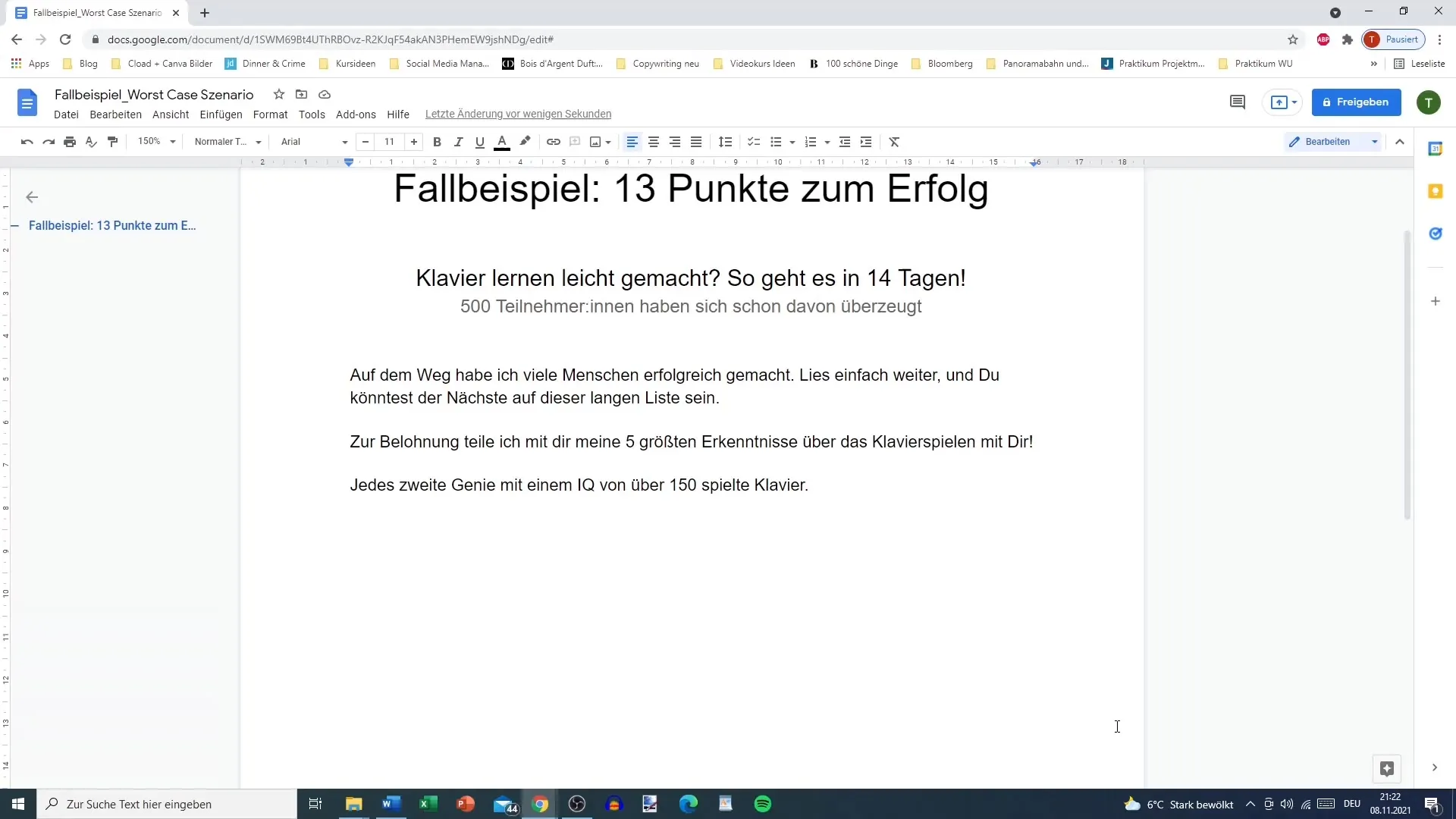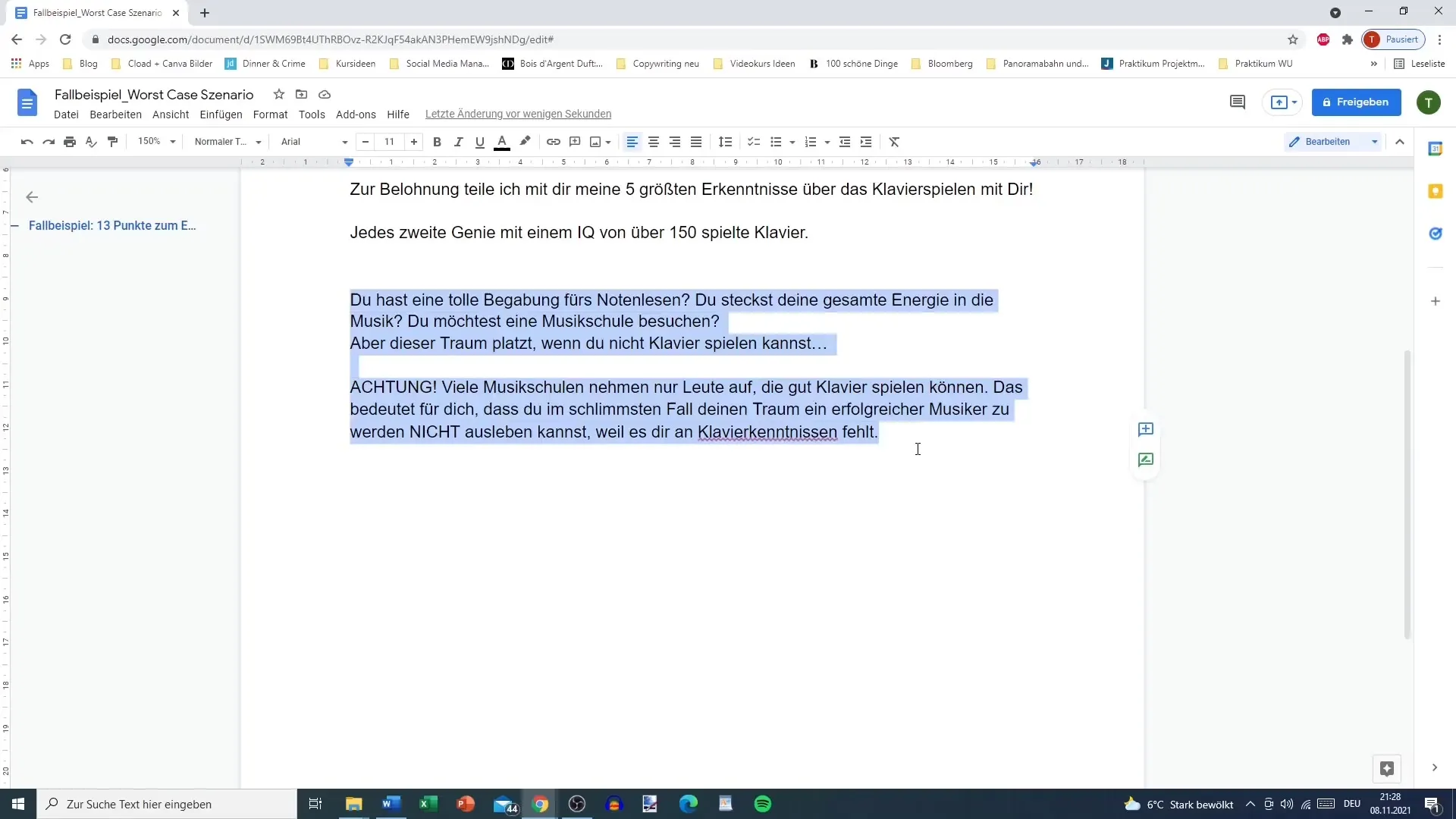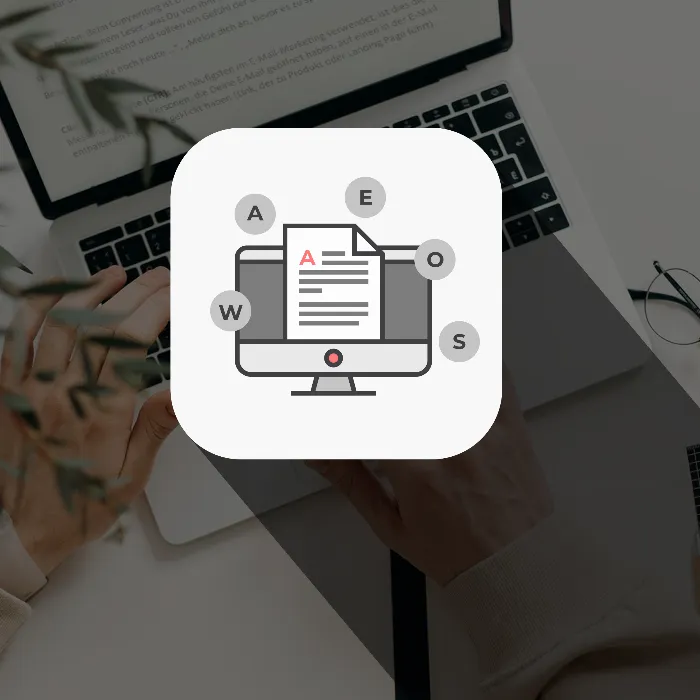If you want to become more successful in the field of copywriting, it is crucial to understand how important the customer's perspective is. In particular, the Worst-Case Scenario plays a central role in the decision-making of your potential buyers. In this tutorial, you will learn how to strategically use the Worst-Case Scenario to highlight the urgency of your offer to your readers. Let's go through the steps together to effectively communicate what is at stake if your customer does not take action.
Key Insights
- The Worst-Case Scenario shows customers what they lose if they do not buy your product.
- Emphasize not only the competition, but also clearly and forcibly describe the consequences of not making a purchase.
- Ask targeted questions to stir emotional interest in the reader.
- Create a connection between the product and the customer's desires and needs.
Step-by-Step Guide
1. Develop Understanding of the Customer
Before you start writing, you should have a clear picture of your target audience. Who are your potential customers? What are their wishes and needs? What fears do they have? A deep understanding of these aspects is crucial for shaping your Worst-Case Scenario.

2. Sketch Out the Worst-Case Scenario
Now it's time to take action and build the Worst-Case Scenario for your customers. Explain what happens if they do not avail your product. This could mean, for example, that they do not achieve their goals or miss out on important opportunities. Illustrate this loss clearly and forcibly.
3. Emotional Connection Through Questions
Start your text with questions that directly address the reader. Ask your reader if they have a special talent they want to develop, or if they have a goal that is close to their heart. By using such personalized addresses, you immediately create a connection and make it easier for the reader to identify with the content.
4. Tell Detailed Example Stories
Telling example stories can strengthen your argumentation. Use hypothetical scenarios to show what could happen to your customer without your product. An example from the music school could illustrate this: If your reader wants to play the piano, make it clear that without this ability, they may never attend the music school they desire.
5. Incorporate Warnings and Urgency
Highlight by introducing deterrents and warnings. Inform your readers that many music schools only accept students who already have certain knowledge. If your reader does not have this knowledge, their dream of becoming a successful musician could collapse. This type of urgency is effective.
6. Refer to Personal Goals
Show your reader what they could lose if they do not take action. Make sure they understand that their dreams and ambitions could be at stake. For example, if they want to be a successful entrepreneur, the reader should realize that lacking skills in creating Facebook ads could have serious consequences.
7. Create Calmness After Intensity
After outlining an emotionally charged Worst-Case Scenario, you should reassure the readers. Gently guide them back to the benefits of your product. Explain how your offer can help prevent negative scenarios and achieve positive results. Clearly link the product to the customer's desire.

Summary
The Worst-Case Scenario is a powerful tool in copywriting. It helps you show your readers the consequences of inaction. By using targeted questions and emotionally engaging stories, you create a strong image that motivates your customers to act. Design your argumentation clearly, authentically, and always in the context of your target audience's needs.
Frequently Asked Questions
What is the Worst-Case Scenario in Copywriting?The Worst-Case Scenario shows the customer the negative impacts if they do not buy your product.
How can I create an emotional connection with the reader?By asking targeted questions and sharing personal stories, you evoke emotions and interest.
Why should I use the Worst-Case Scenario?It strengthens the urgency to purchase your product by showcasing potential losses.
What should I do after the Worst-Case Scenario?Reassure the readers and redirect their attention to the benefits of your product.


